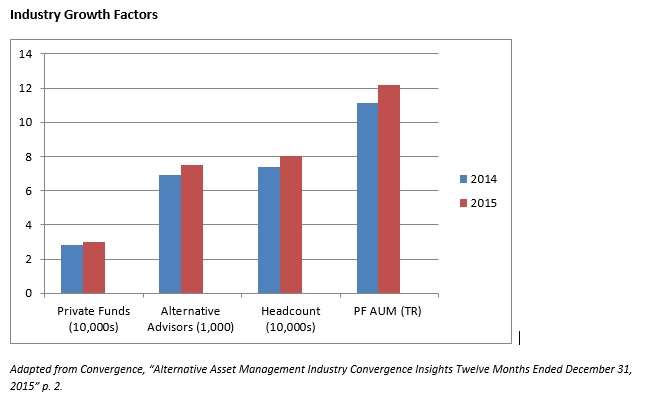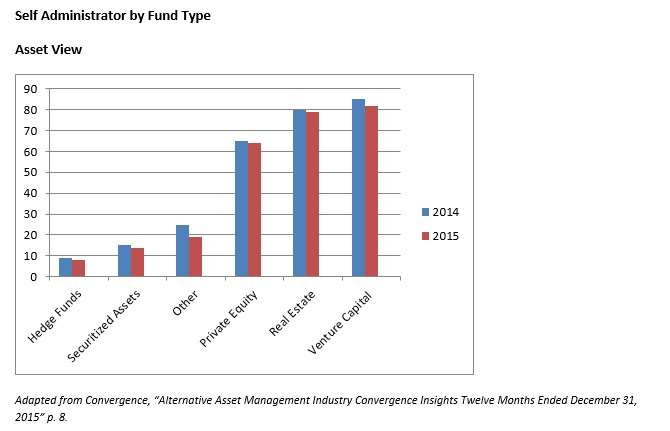Convergence, a research and advisory firm serving the alternative asset management world, has posted a review of the year 2015, looking at where the industry stands by comparing 2015 and 2014 numbers in a number of respects.
One key point is that the industry continues to grow, for the simplest of reasons: investors continue to want its services. So despite severe headwinds, “reduced leverage, weaker performance returns, increased industry regulation and … banks who are reducing their balance sheet,” investors continue to look for asset classes not correlated with the more traditional slices in their portfolio, and managers who can offer this, remain the beneficiaries of that demand.
Serving that demand means having enough people on hand to do the work that needs to be done. Thus, the report has much to say about the headcount.

The total headcount reported by managers increased from 74,356 to 79,803 year to year, as represented by the third pair of columns above. This increase in staffing indicates, says the report, “the growth in funds advised, the broadening of funds structures to capture new distribution channels and the management of increased business complexity.”
The staff of fund managers divides almost equally into investment professionals and others. The IP part of the staff increased 8% from one year to the next, in 2015 representing 40,103. Looking at the increasing complexity of the industry, as well as increasing regulatory requirements and investor-based pressures, the report concludes that managers “cannot avoid hiring more middle and back office professionals.”
Regulatory Environment
Regulatory oversight has intensified of late. In quantitative terms, this means a 1.4 percent increase in regulators per manager, and a 28 percent increase in regulatory activity. There have also been increased numbers in criminal and civil actions brought from 2014 to 2015.
In the realm of service providers, the report says that prime brokers and related custody businesses have been consolidating, so the number of providers per manager has declined slightly. Consolidation is likely to continue as banks get more selective in funding these businesses on their balance sheets.
But, small increases in per-Manager Auditors and Administrators were noted. Consistent with that, the assets of self-administered funds declined for the second year running. Such assets represented 33.5 percent of the industry in 2014. That number fell to 26.7 percent in 2014 and to 25.8 percent in 2015.
Breaking down the decline in self-administration by fund type yields a graph that looks like this:

Taking the same snapshot, but looking at the number of funds rather than the total of the assets they manage, yields a very similar result. In hedge funds, as you can see above, self-administration has declined from 9 percent in 2014 to 8 percent last year in the asset view. In the fund numbers view, the corresponding numbers are 16.9 and 13.2, respectively.
Productivity
Finally, Convergence finds that operational productivity improved year to year. They define this as “the number of staff needed to support private funds and the number of staff per billion dollars of regulatory assets under management.”



